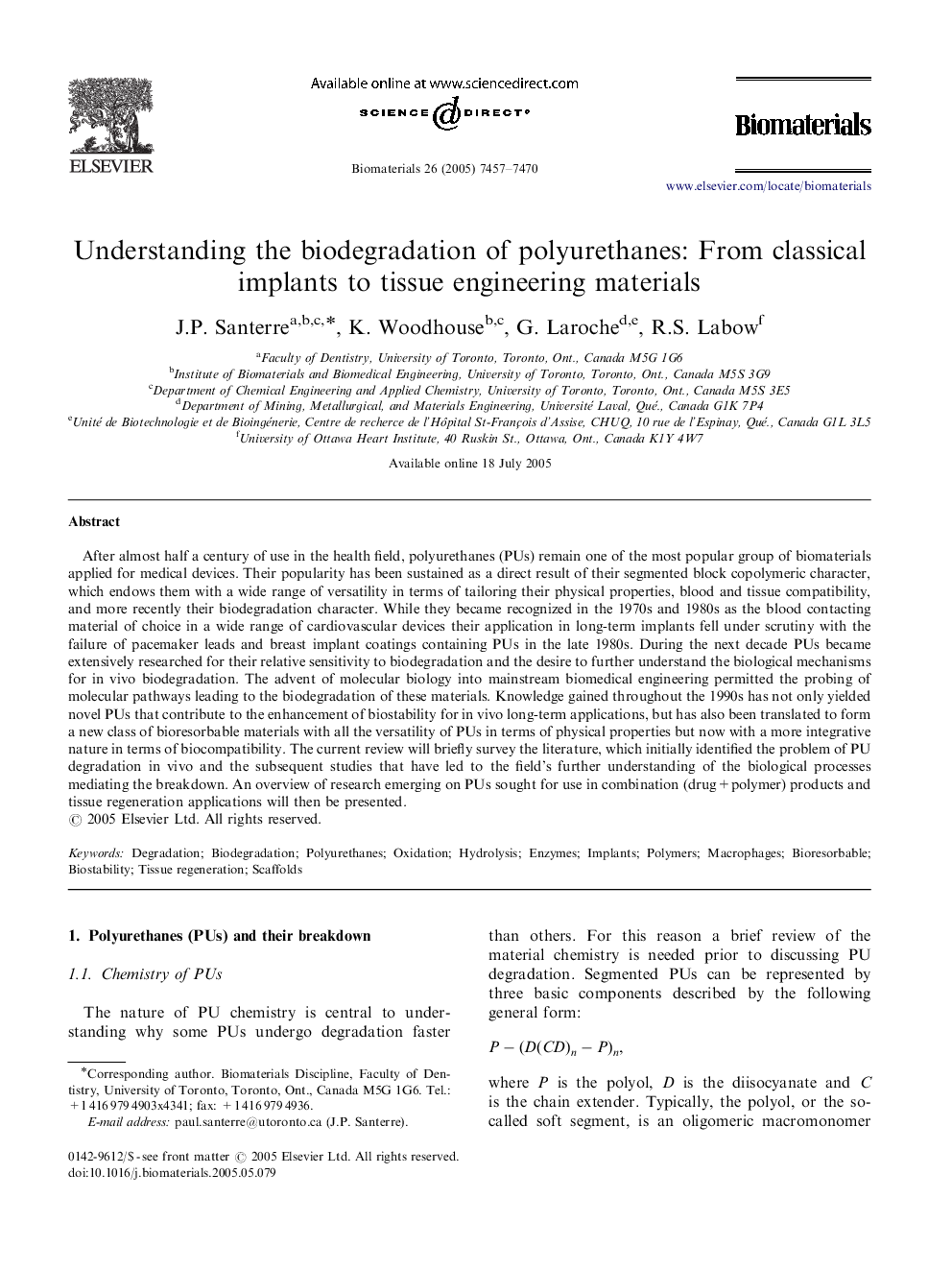| Article ID | Journal | Published Year | Pages | File Type |
|---|---|---|---|---|
| 10916 | Biomaterials | 2005 | 14 Pages |
After almost half a century of use in the health field, polyurethanes (PUs) remain one of the most popular group of biomaterials applied for medical devices. Their popularity has been sustained as a direct result of their segmented block copolymeric character, which endows them with a wide range of versatility in terms of tailoring their physical properties, blood and tissue compatibility, and more recently their biodegradation character. While they became recognized in the 1970s and 1980s as the blood contacting material of choice in a wide range of cardiovascular devices their application in long-term implants fell under scrutiny with the failure of pacemaker leads and breast implant coatings containing PUs in the late 1980s. During the next decade PUs became extensively researched for their relative sensitivity to biodegradation and the desire to further understand the biological mechanisms for in vivo biodegradation. The advent of molecular biology into mainstream biomedical engineering permitted the probing of molecular pathways leading to the biodegradation of these materials. Knowledge gained throughout the 1990s has not only yielded novel PUs that contribute to the enhancement of biostability for in vivo long-term applications, but has also been translated to form a new class of bioresorbable materials with all the versatility of PUs in terms of physical properties but now with a more integrative nature in terms of biocompatibility. The current review will briefly survey the literature, which initially identified the problem of PU degradation in vivo and the subsequent studies that have led to the field's further understanding of the biological processes mediating the breakdown. An overview of research emerging on PUs sought for use in combination (drug+polymer) products and tissue regeneration applications will then be presented.
